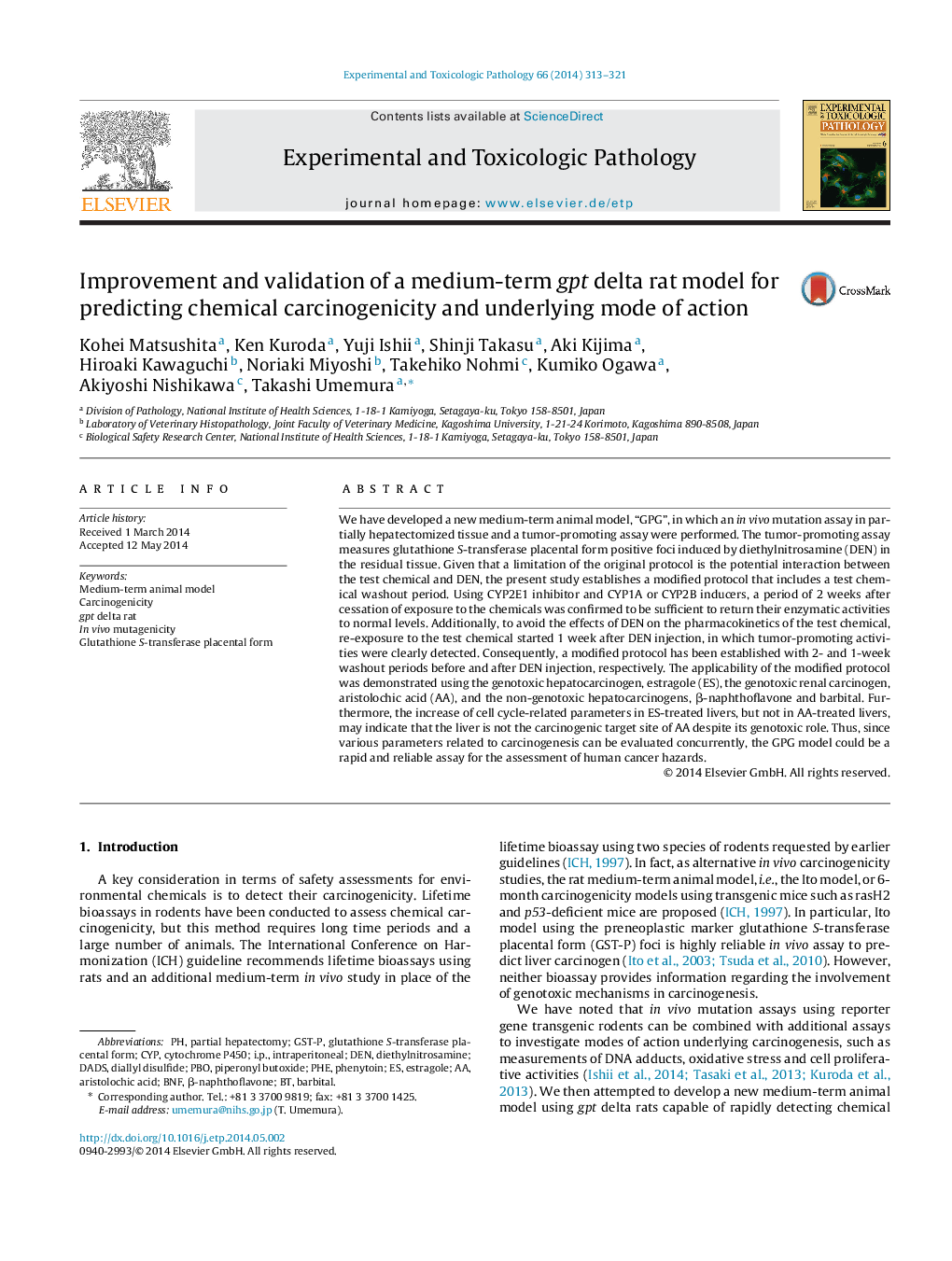| Article ID | Journal | Published Year | Pages | File Type |
|---|---|---|---|---|
| 2498931 | Experimental and Toxicologic Pathology | 2014 | 9 Pages |
We have developed a new medium-term animal model, “GPG”, in which an in vivo mutation assay in partially hepatectomized tissue and a tumor-promoting assay were performed. The tumor-promoting assay measures glutathione S-transferase placental form positive foci induced by diethylnitrosamine (DEN) in the residual tissue. Given that a limitation of the original protocol is the potential interaction between the test chemical and DEN, the present study establishes a modified protocol that includes a test chemical washout period. Using CYP2E1 inhibitor and CYP1A or CYP2B inducers, a period of 2 weeks after cessation of exposure to the chemicals was confirmed to be sufficient to return their enzymatic activities to normal levels. Additionally, to avoid the effects of DEN on the pharmacokinetics of the test chemical, re-exposure to the test chemical started 1 week after DEN injection, in which tumor-promoting activities were clearly detected. Consequently, a modified protocol has been established with 2- and 1-week washout periods before and after DEN injection, respectively. The applicability of the modified protocol was demonstrated using the genotoxic hepatocarcinogen, estragole (ES), the genotoxic renal carcinogen, aristolochic acid (AA), and the non-genotoxic hepatocarcinogens, β-naphthoflavone and barbital. Furthermore, the increase of cell cycle-related parameters in ES-treated livers, but not in AA-treated livers, may indicate that the liver is not the carcinogenic target site of AA despite its genotoxic role. Thus, since various parameters related to carcinogenesis can be evaluated concurrently, the GPG model could be a rapid and reliable assay for the assessment of human cancer hazards.
